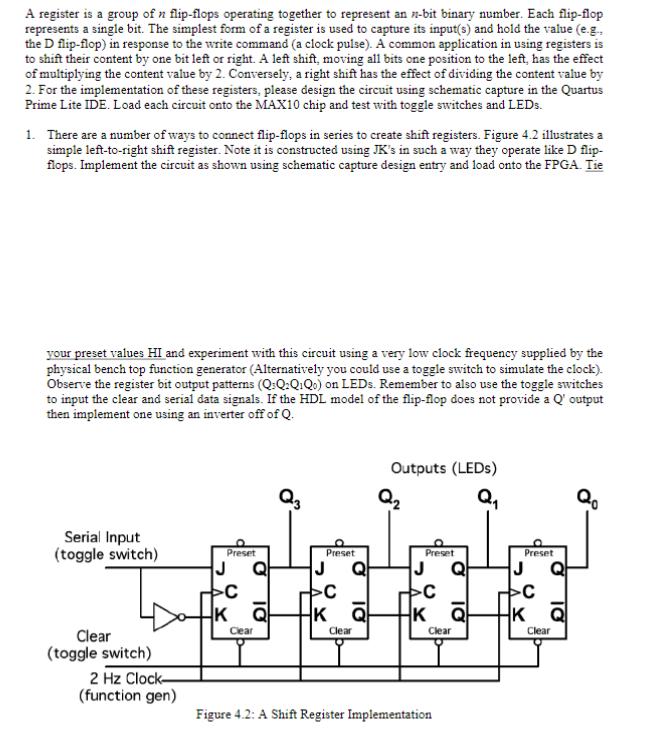Answered step by step
Verified Expert Solution
Question
1 Approved Answer
A register is a group of n flip-flops operating together to represent an x-bit binary number. Each flip-flop represents a single bit. The simplest

A register is a group of n flip-flops operating together to represent an x-bit binary number. Each flip-flop represents a single bit. The simplest form of a register is used to capture its input(s) and hold the value (e.g.. the D flip-flop) in response to the write command (a clock pulse). A common application in using registers is to shift their content by one bit left or right. A left shift, moving all bits one position to the left, has the effect of multiplying the content value by 2. Conversely, a right shift has the effect of dividing the content value by 2. For the implementation of these registers, please design the circuit using schematic capture in the Quartus Prime Lite IDE. Load each circuit onto the MAX10 chip and test with toggle switches and LEDs. 1. There are a number of ways to connect flip-flops in series to create shift registers. Figure 4.2 illustrates a simple left-to-right shift register. Note it is constructed using JK's in such a way they operate like D flip- flops. Implement the circuit as shown using schematic capture design entry and load onto the FPGA. Tie your preset values HI and experiment with this circuit using a very low clock frequency supplied by the physical bench top function generator (Alternatively you could use a toggle switch to simulate the clock). Observe the register bit output patterns (Q:Q:QiQo) on LEDs. Remember to also use the toggle switches to input the clear and serial data signals. If the HDL model of the flip-flop does not provide a Q' output then implement one using an inverter off of Q. Serial Input (toggle switch) Clear (toggle switch) 2 Hz Clock- (function gen) Preset J >C Clear Preset >C K Q Clear Outputs (LEDs) Q Preset J C Q Ka Clear Figure 4.2: A Shift Register Implementation Preset J C K Clear
Step by Step Solution
★★★★★
3.38 Rating (154 Votes )
There are 3 Steps involved in it
Step: 1

Get Instant Access to Expert-Tailored Solutions
See step-by-step solutions with expert insights and AI powered tools for academic success
Step: 2

Step: 3

Ace Your Homework with AI
Get the answers you need in no time with our AI-driven, step-by-step assistance
Get Started


